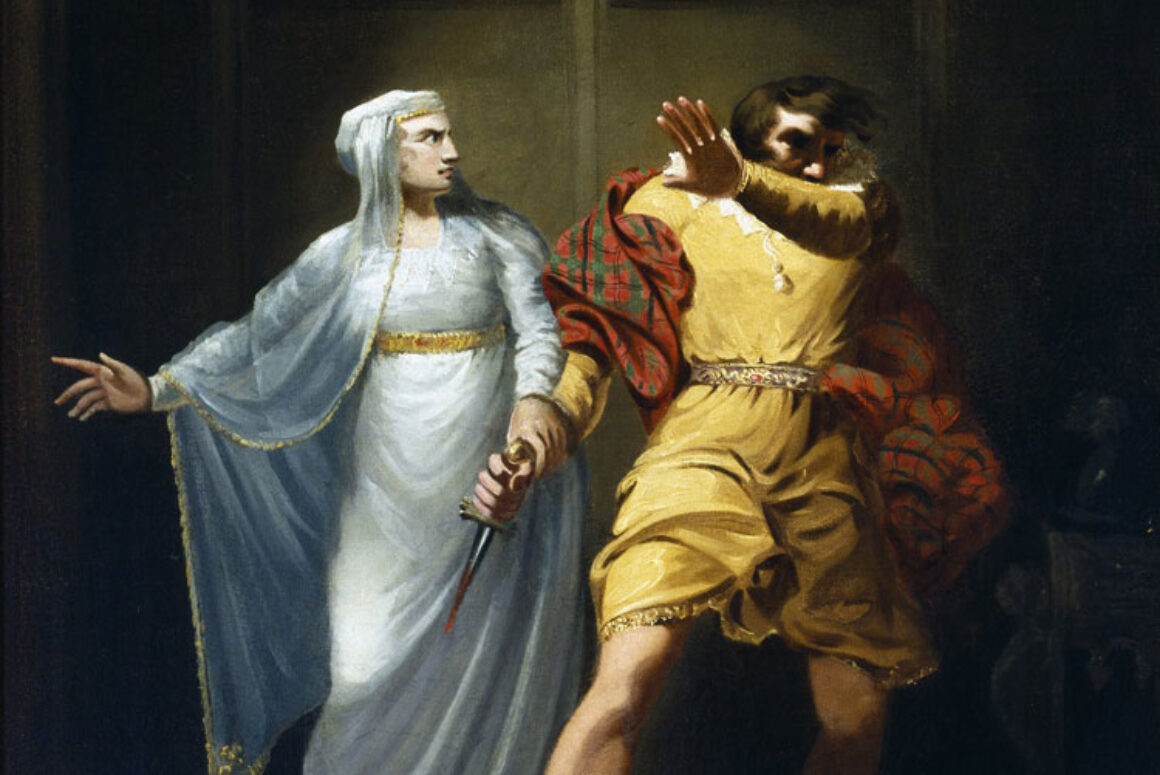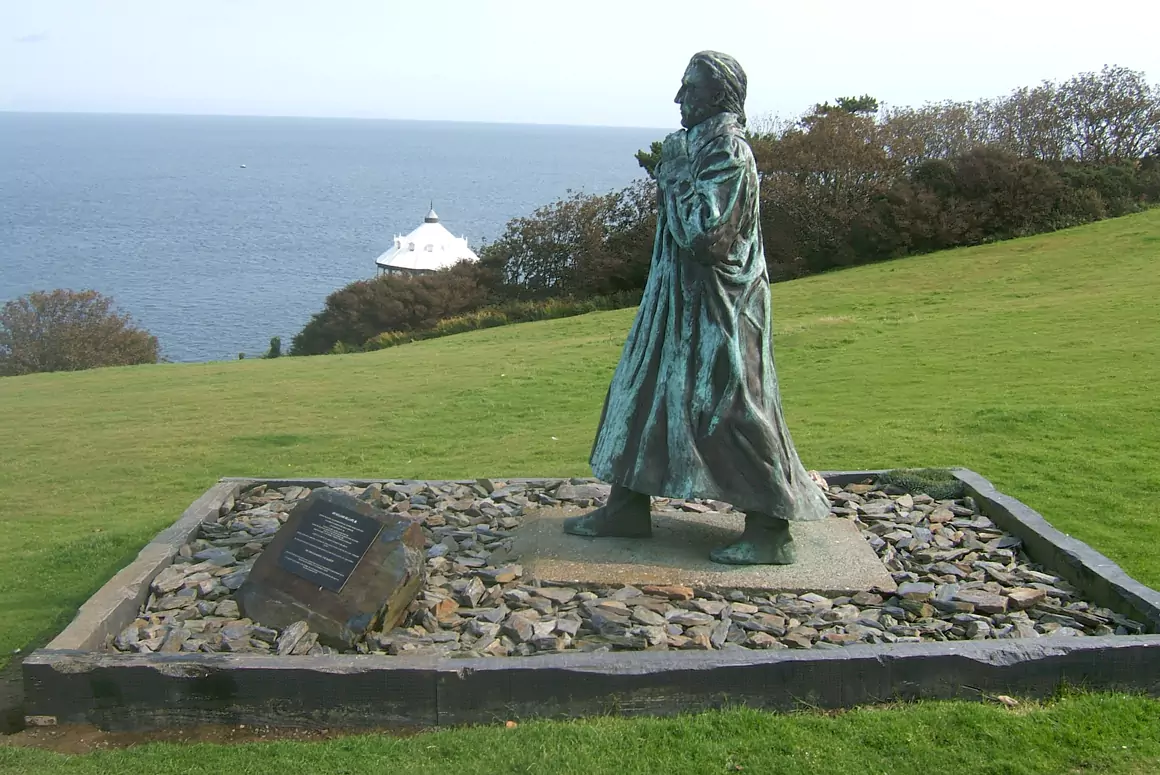![]()
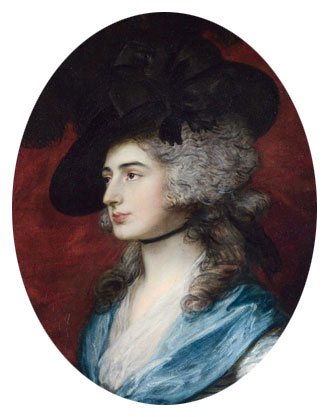
The last time I wrote for ‘Welsh Country’ I made a self-acknowledged mistake, one of those senior moments that we become accustomed to as we get a tad older in the incisor. The subject of my latest bio, Sarah Siddons, would probably not have made such a mistake, or admitted to it even if she had, for she attained ‘a height of perfection probably unsurpassed by any player of any age or country’. The rest of us mere mortals can only do our best. For the avoidance of any doubt, by ‘player’ we mean an ‘actress’, not the latest prop-forward. She was to become, in fact, one of our greatest tragediennes, if not the greatest.
Sarah Kemble was born in Brecon, on 5th July 1755, the eldest child of Roger Kemble, the manager of a minor travelling theatrical company belonging to John Ward, which performed on both sides of the Welsh border, utilising no more than a dozen players. The birthplace was ‘The Shoulder of Mutton’ pub, today’s ‘The Sarah Siddons’ (47, High Street), where she came into the world in ‘a room above a small tavern’, overlooked by St Mary’s church tower. Treading the boards was in the genes, or at least, earning a living from it was. The precocious Sarah, the eldest of eleven, would be a member of the troupe ‘from her earliest childhood’, adding her own brand of cuteness to proceedings and her early years revolved around the company.
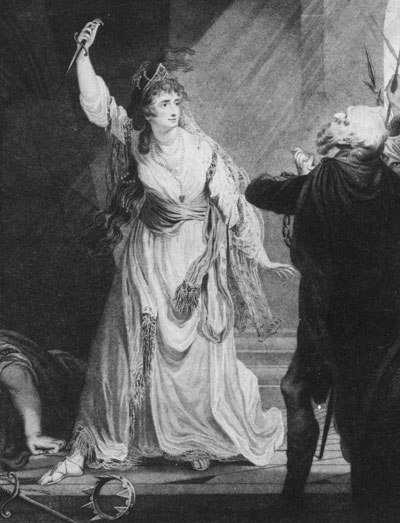
Roger Kemble was a Roman Catholic and his wife, Sarah (or ‘Sally’), after whom our Sarah was named, was a Protestant, which must have made for an interesting marriage and upbringing for the youngster. It was decided, however, that Sarah, and her sisters, would be raised as Protestants, whilst the boys were to follow the other faith. This was both interesting and confusing. Further confusion came with the father’s theatre company, which included most of the brood and yet, Mum and Dad managed to disapprove of Sarah’s career choice in the theatre! The problem here was that acting was only just about to become a respectable career choice for a lady (female parts having previously been acted by men). Sarah had her mother to thank though for a decent education as she made sure she attended the schools in the towns where the troupe was performing.
Sarah worked as a lady’s maid from 1770 (aged 15), until 1773, when she was 18 and married William Siddons, a fellow-actor, in Coventry (during this phase of her life Sarah also displayed a latent talent for sculpture). William had played in the Chester theatre (May 1772) and joined the Ward-Kemble company soon after that, but his wish to wed Sarah was opposed by both her parents and by a Brecon gentleman named Evans, who perhaps had aspirations himself (her parents certainly had hopes that she would wed a squire). William went as far as to appeal directly to his audience in Brecon (in verse) and was dismissed from the company for his insubordination and downright cheek. The marriage went ahead though on 26th November 1773 in what smacks of a shotgun wedding, although the approval of Sarah’s parents was sought and eventually granted. In 1774, she appeared in Cheltenham in Thomas Otway’s ‘Venice Preserv’d’ and won plaudits. It appeared she was ready for London.
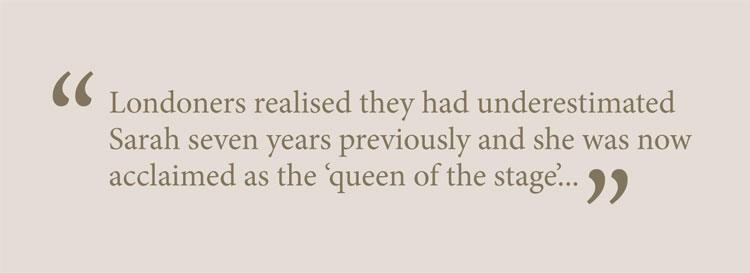
The following year (December 1775) she made her debut at the Theatre Royal, Drury Lane, when she appeared as ‘Portia’, but this does not appear to have been an unmitigated success. If the ‘metropolitan elite’ turned their noses up at the 20-year-old from Wales, the provinces certainly did not, and Sarah quickly established a burgeoning reputation around the country for her masterful performances. This prompted a return to Drury Lane in October 1782, by which time she was aged 27. Second time around there was no doubt about the reception she would receive and her depiction of ‘Isabella’ in David Garrick’s adaptation of Thomas Southerne’s ‘Fatal Marriage’ went down an absolute storm. Londoners realised they had underestimated Sarah seven years previously and she was now acclaimed as the ‘queen of the stage’ and became the hottest ticket in town, with ‘Siddons Fever’ becoming the latest phenomenon (celebrity is nothing new). Such was her fame that she was appointed to teach elocution to the children of the royal family.
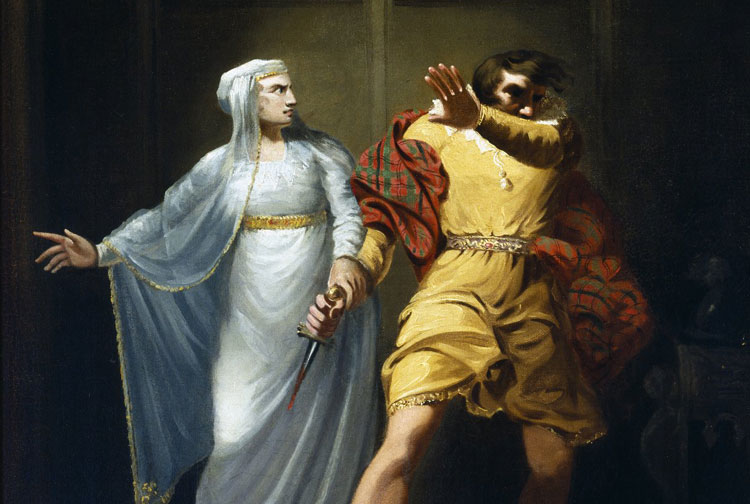
Sarah was now the leading light of a theatrical family. Her younger (but eldest) brother, John Philip Kemble, was a noted actor, whilst siblings Charles Kemble, Stephen Kemble, Ann Hatton and Elizabeth Whitlock also enjoyed considerable success on the stage. It really was quite a dynasty. In 1803, Sarah followed John Philip to Covent Garden, which would be her home turf until she bid a formal farewell to the stage, on 29th June 1812, playing one of her favourite and most enduring characters, Lady Macbeth. She was just coming up to her 57th birthday. There was a winding down after that with Sarah only appearing occasionally, and even then, only for special benefits. She also, on occasion, gave public readings.
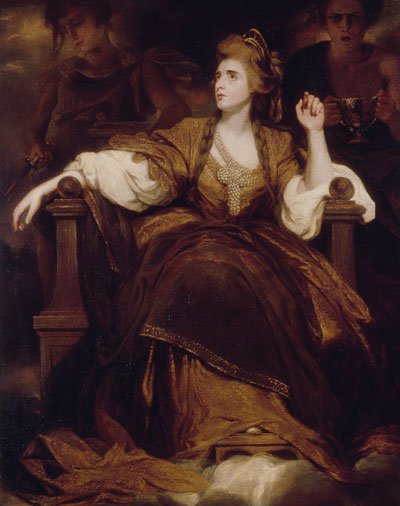
So, what exactly was the key to the success of Sarah Siddons? Well, she undoubtedly had a truly expressive and beautiful face, a fact that portraits of her, both in character and natural, testify to. She was also fortunate to have a fine figure (described as ‘queenly’) and a powerful voice full of richness and flexibility. Those Welsh voices eh. She also left nothing to chance, working hard and tirelessly to make the most of the gifts she had: a lesson for us all perhaps.
We all have our strengths and weaknesses, however and Sarah’s strength was definitely as the tragic heroine, the Lady Macbeth type if you will (in, fact Sarah became Lady Macbeth and Lady Macbeth became Sarah, so totally did the actress take over the character). A contemporary, William Hazlitt, described her as ‘tragedy personified’, which was intended as a compliment. She was certainly less successful at comedy, which just wasn’t her bag. She was also dramatic, once reputedly fainting at the sight of the Elgin Marbles. Well, they are impressive. Her favourite character to play, however, was not Lady Macbeth, but Queen Katherine (of Aragon), in Shakespeare’s lesser-known ‘Henry VIII’. Katherine was another formidable lady, but an altogether more sympathetic character.
Although Sarah had been born in Wales, her visits to her home country were limited as she grew older, pretty much to occasional visits to ‘Brynbella’, the neoclassical villa, in north-east Wales, where her friend, Hester Piozzi, lived. Her marriage proved to be an unhappy one and William and Sarah would end up separated, however, Sarah became so renowned that her soirées were attended by the likes of the Duke of Wellington, Edmund Burke and Samuel Johnson. Sarah passed away of a bacterial infection, in June 1831, in London, at the fairly grand age (for the time) of 75. A famous niece was the actress/writer/diarist Frances (Fanny) Kemble, the daughter of Sarah’s brother, Charles Kemble.
Words: Stephen Roberts
Other resources: Wikipedia


